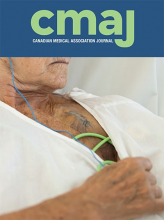Infections of cardiovascular implantable electronic devices (CIEDs) occur at a rate of about 1% in the first year1,2
One year mortality after infection is 15–30%3 In 2021, 120 000 people in Canada were living with CIEDs, including permanent pacemakers and defibrillators.4
Infections can involve the pacemaker pocket and generator, the leads, or both5
Pocket infections commonly present with pain, swelling, discharge, or erosion, but these signs may be absent. Erosion of the skin and visualization of the device always indicates contamination.5 Fever is more likely among patients with infection who have positive blood cultures, as well as those with CIED-associated endocarditis.5
Most CIED infections are caused by bacteria that colonize the skin
Coagulase-negative staphylococci and Staphylococcus aureus are the most common causes.5 Although coagulase-negative staphylococci are often considered culture contaminants, they should be considered pathogenic when cultured from samples from the CIED pocket, or blood samples from patients with signs of a CIED infection.5 Cultures are negative in 7%–21% of people with suspected CIED infections.1
Patients require urgent assessment by a cardiac electrophysiologist and an infectious disease specialist2,5
Emergency department referral is often needed. At least 2 sets of blood samples from different sites should be cultured before antibiotics are started.2,5 A complete blood count should also be performed. Transesophageal echocardiography is indicated for all patients with positive blood cultures, patients with clinical features of infective endocarditis, or patients who received antibiotics before blood cultures were obtained.2,5
Treatment involves complete device removal and antibiotic therapy2,5
Hemodynamic instability, advancing chest wall infection, positive blood cultures, or echocardiographic evidence of CIED-associated endocarditis are indications for immediate device removal at a centre with expertise.2,5 For patients with pocket infection, 7–14 days of antimicrobial therapy is recommended after device explant while those with CIED-associated endocarditis require 4–6 weeks of antimicrobial therapy.2 For patients with bacteremia in whom transesophageal echocardiogram shows no abnormality, a minimum of 2 weeks of antibiotic treatment is recommended.2 If reimplantation is indicated, this should occur no sooner than 72 hours after device removal and with negative blood cultures.2,5
Footnotes
Competing interests: Maxime Billick reports an honorarium from the Canadian Dermatologic Nurses Association. No other competing interests were declared.
This article has been peer reviewed.
This is an Open Access article distributed in accordance with the terms of the Creative Commons Attribution (CC BY-NC-ND 4.0) licence, which permits use, distribution and reproduction in any medium, provided that the original publication is properly cited, the use is noncommercial (i.e., research or educational use), and no modifications or adaptations are made. See: https://creativecommons.org/licenses/by-nc-nd/4.0/











